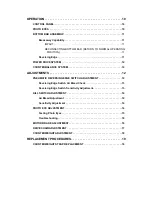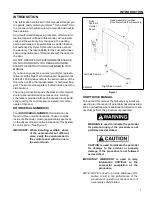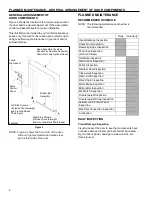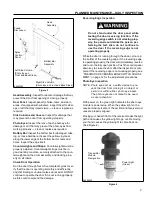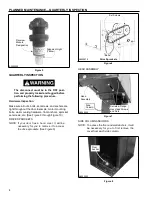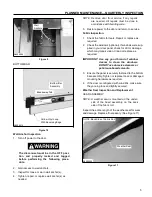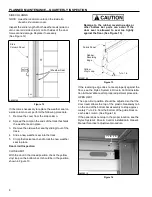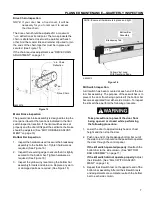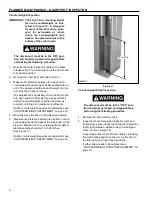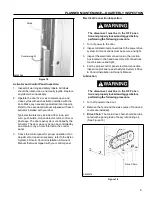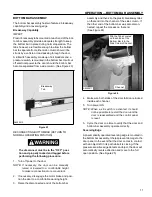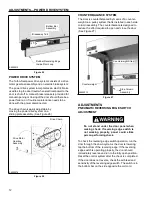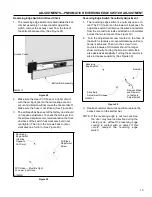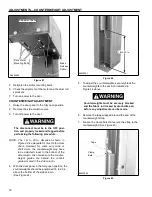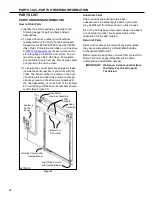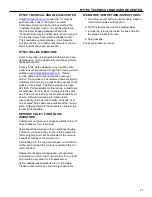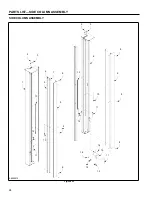
11
OPERATION—BOTTOM BAR ASSEMBLY
BOTTOM BAR ASSEMBLY
The bottom bar assembly has two features: breakaway
capability and a reversing edge.
Breakaway Capability
IMPACT
Plastic breakaway tabs mounted at each end of the bot-
tom bar assembly provide adequate strength to keep
the bottom bar in place during normal operation. The
tabs however, are flexible enough to allow the bottom
bar to separate from either side column should it be
struck by a vehicle or load passing through the door.
A kill switch assembly, made up of air bladders and a
pressure switch, is mounted in the bottom bar. It will cut
off electrical power to the door should the bottom bar
become separated from a side column. (See Figure 23)
assembly and then slip the plastic breakaway tabs
on that end into the channel of the side column. If
the other end of the bottom bar was also discon-
nected, repeat the process on that end.
(See Figure 24)
Slip the Tabs Located
on Each End of the
Bottom Bar Into the
Side Column Channel
Breakaway
Tab
A8500077
Channel
Figure 24
A8500212
Figure 23
4. Make sure both sides of the door fabric are tucked
inside each channel.
5. Turn power ON.
NOTE: When a kill switch is activated, it should
not be possible to restart the door until the
door is reassembled and the control panel
is reset.
6. Cycle the door one time to verify that the door and
bottom bar assembly operate correctly.
RECONNECTING BOTTOM BAR (RETURN TO
NORMAL OPERATING POSITION)
The disconnect must be in the “OFF” posi-
tion and properly locked and tagged before
performing the following procedure.
1. Turn off power to the door.
NOTE: If necessary, the door can be manually
raised or lowered to a comfortable height
to make reconnection more convenient.
2. If necessary, disengage the motor brake and posi-
tion the door to a comfortable working height.
3. Raise the disconnected end of the bottom bar
Reversing Edge
A pneumatically operated reversing edge is mounted in
the bottom bar assembly. It helps prevent damage to the
door panel in the event that the door comes in contact
with an object left in its path while it is closing. If the
pressure sensitive edge detects an object, the door will
automatically reverse direction and move to the full
open position. (See Figure 25)


